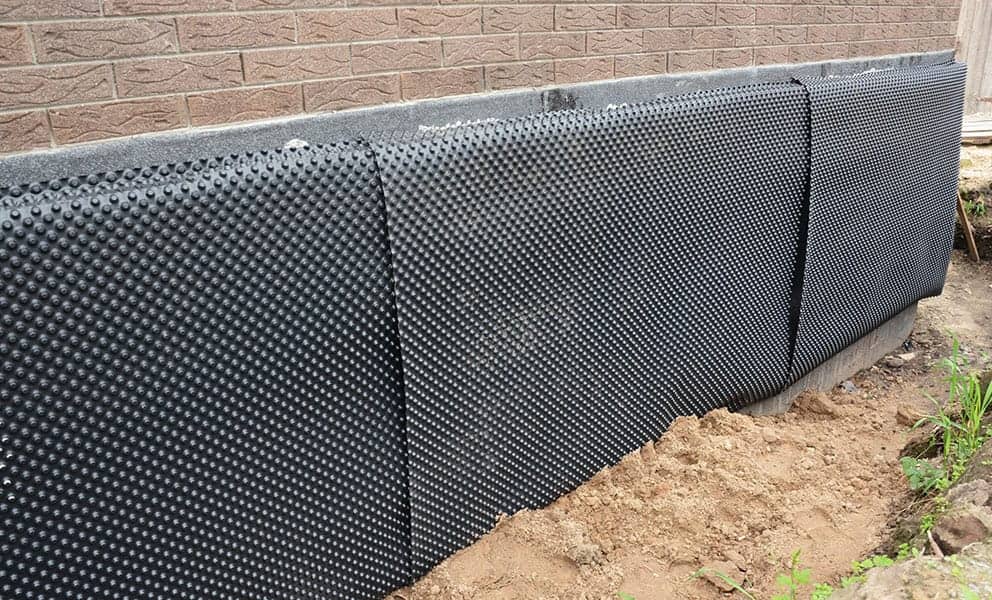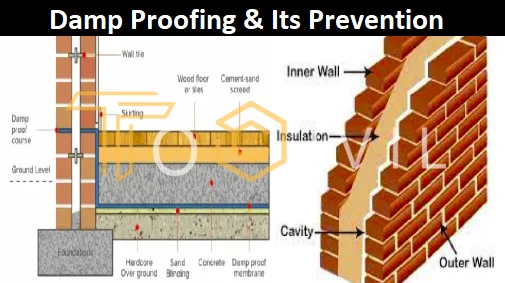Fixing condensation problems permanently with mould treatment newcastle
Fixing condensation problems permanently with mould treatment newcastle
Blog Article
Comprehending the Significance of Damp Proofing in Fighting Structural Damages
Wet proofing functions as an essential protection against dampness seepage in buildings. This safety action can avoid significant structural damage, yet many homeowner remain uninformed of its relevance. Recognizing the signs of dampness and comprehending the different services readily available can be necessary. Nevertheless, ignoring moist proofing can result in extreme consequences. What are the particular dangers and remedies that residential property proprietors should think about?
What Perspires Proofing and How Does It Function?
Moist proofing works as an important obstacle versus wetness invasion in buildings. mould removal newcastle. This process entails using details products and methods to stop water from passing through wall surfaces, floors, and various other structural elements. Usually, wet proofing can be accomplished via the installment of moist evidence membranes, coatings, or the usage of specialized sealants.These methods function by developing a safety layer that hinders wetness motion, guaranteeing that the indoor atmosphere stays healthy and completely dry. Wet proofing is especially essential in locations susceptible to high moisture or groundwater, as it assists keep the honesty of the framework over time.Moreover, efficient wet proofing adds to power efficiency by avoiding warm loss related to wet atmospheres. By addressing prospective wetness problems before they rise, damp proofing serves as a proactive measure in guarding buildings from the destructive effects of water damage, inevitably prolonging their life expectancy and maintaining their value
Typical Signs of Wetness in a Structure
Moisture problems within a building can materialize via several visible signs that indicate the presence of wetness. One noticeable indicator is the appearance of water discolorations on walls or ceilings, which commonly shows dampness infiltration. Furthermore, gurgling or peeling off paint can suggest that excess moisture is entraped below the surface area, causing damage. An additional typical indication is the presence of mold and mildew and mold, which grow in wet conditions and can often be recognized by their musty smell. An increase in moisture levels can create condensation on windows and other surface areas, highlighting wetness issues. Finally, irregular or warped flooring might signal underlying wetness that jeopardizes architectural integrity. Recognizing these indications early can aid minimize potential damage and preserve a risk-free living environment. Normal examinations and timely activity are vital in attending to wetness problems prior to they escalate.
The Threats of Neglecting Damp Proofing
Ignoring moist proofing can bring about considerable risks to a structure's architectural stability, as moisture build-up may weaken foundations and walls. Furthermore, prolonged moisture creates an environment for mold and mildew growth, positioning severe health hazards to passengers. Attending to these dangers is essential for guaranteeing both safety and security and longevity of the home.
Structural Honesty Risks
They expose their residential or commercial properties to substantial architectural integrity threats when house owners neglect the value of effective damp proofing. Long term dampness infiltration can result in the advancement of mold, which deteriorates fundamental components and can jeopardize total security. Additionally, excess dampness can erode concrete and brickwork, resulting in fractures and structural failings. Wood elements are specifically vulnerable; they can rot and lose load-bearing ability, posing severe dangers to the structure's framework. Furthermore, without treatment wet conditions may attract bugs, such as termites, which even more worsen structural wear and tear. Eventually, ignoring wet proofing actions can result in pricey repair services and possible security hazards, emphasizing the important function of aggressive wet management in maintaining the stability of houses.
Carcinogen Concerns
How can a relatively small oversight cause serious health dangers? Neglecting moist proofing can develop a setting for mold development, which poses significant health dangers. Mold and mildew spores can activate allergies, respiratory system concerns, and other wellness problems, particularly in susceptible populations such as kids, the elderly, and people with pre-existing conditions. In addition, persistent dampness can attract insects like rats and bugs, which bring diseases that better compromise wellness. The presence of moisture also contributes to a decrease in interior air top quality, aggravating bronchial asthma and other breathing disorders. As a result, the failing to attend to moist concerns not only endangers structural honesty yet additionally endangers the wellness of occupants, highlighting the important demand for effective moist proofing procedures.
Different Sorts Of Damp Proofing Solutions
Various factors can add to damp issues in buildings, choosing the ideal wet proofing remedy is essential for preserving structural stability. Several choices are available, each tailored to certain conditions.One typical option is a damp-proof membrane (DPM), commonly constructed from polyethylene or bitumen, which is installed in walls and floors to stop moisture ingress. Another option is damp-proof training courses (DPC), which are layers of waterproof product placed within walls to obstruct climbing damp.Chemical damp proofing involves injecting waterproofing chemicals into wall surfaces to produce a barrier against wetness. In addition, outside therapies such as tanking, which includes using a water-proof layer to the exterior of structures, can be efficient in preventing water penetration.Each service has its advantages and is picked based upon the structure's particular concerns, environmental conditions, and long-term upkeep considerations, making sure perfect defense versus damp-related damages.

The Expense of Damp Damage vs. Avoidance
Comprehending the economic effects of moist damage contrasted to prevention highlights the value of proactive measures. The prices linked with moist damage can be substantial, consisting of repair work to architectural elements, mold and mildew remediation, and prospective health-related expenditures. Homeowners may encounter considerable economic pressure if extensive damage occurs, bring about boosted insurance premiums and lost building value.In comparison, spending in wet proofing remedies is generally much more affordable. Initial expenditures for avoidance techniques, such as boosting or mounting damp-proof membrane layers water drainage systems, are commonly surpassed by the long-term cost savings from staying clear of expensive repair work. Furthermore, stopping moist concerns can enhance a building's total worth and charm, making it a smart investment. When assessing the expense of wet damages versus prevention, it comes to be clear that taking aggressive steps can secure monetary passions and keep the honesty of the residential or commercial property with time.
Picking the Right Damp Proofing Method for Your Residential property
Which moist proofing method is most ideal for a particular building commonly relies on numerous factors, including the building's age, existing wetness problems, and local ecological conditions. For older structures, standard techniques such as asphalt membranes or cementitious coatings might be much more effective, as they can provide a durable obstacle against rising moist. In comparison, more recent structures could gain from modern options like injected damp-proof programs, which are less invasive and can be tailored to certain moisture challenges.Additionally, properties in locations with high water tables or heavy rainfall may call for advanced methods, such as cavity wall surface drain systems or outside waterproofing. House owners need to also consider the specific products made use of in their structure's construction, as some methods may not work. Ultimately, an extensive analysis by an expert can guide residential property owners in selecting the most effective moist proofing approach tailored to their one-of-a-kind scenarios.
Maintaining Your Damp Proofing System Over Time
Routine maintenance of a damp proofing system is necessary for guaranteeing its long-lasting efficiency and protecting a residential property from moisture-related damages. Building proprietors ought to perform regular assessments to recognize any type of signs of wear or compromise in the damp proofing layer. This consists of monitoring for splits, peeling off paint, or mold development, which may show moisture intrusion.Additionally, it is suggested to tidy rain gutters and downspouts on a regular basis to avoid water build-up around the foundation. Reapplying membrane layers or sealants may be essential if deterioration is observed.Engaging expert services for regular assessments can additionally improve the longevity of the system. These specialists can provide understandings right into prospective susceptabilities and recommend prompt repairs.
Regularly Asked Inquiries
How Much Time Does Damp Proofing Therapy Last Before Requiring Fixings?
The longevity of damp proofing therapy typically varies from 10 to 30 years, depending on aspects such as the technique made use of, ecological problems, and maintenance techniques. Routine examinations can help figure out when fixings might be necessary.
Is DIY Damp Proofing Effective Contrasted to Specialist Providers?
The efficiency of do it yourself wet proofing varies significantly. damp specialist newcastle. While some individuals might accomplish sufficient outcomes, specialist services generally assure thorough solutions, leveraging expertise and quality products to avoid future problems much more accurately than the majority of do it yourself efforts
Can Damp Proofing Improve Indoor Air High Quality?
The concern of whether wet proofing can boost interior air quality arises regularly. Efficient wet proofing lowers dampness degrees, thereby decreasing mold growth and irritants, eventually adding to a healthier indoor setting for owners.
Exist Details Regulations for Damp Proofing in Different Areas?
Laws for moist proofing differ by region, often influenced by local building regulations and environmental problems. Compliance guarantees efficient moisture control, safeguarding frameworks and advertising security, which highlights the requirement for adherence to these certain guidelines.

What Are the Long-Term Perks of Correct Damp Proofing?
The long-lasting benefits of proper damp proofing consist of boosted architectural integrity, reduced maintenance expenses, improved interior air top quality, and enhanced building worth. These advantages add to a much healthier living atmosphere and extended life-span of structures. Typically, damp proofing can be attained via the setup of damp evidence membrane layers, coverings, or the use of specialized sealants.These approaches work by producing a protective layer that hinders wetness movement, ensuring that the indoor environment continues to be healthy and balanced and dry. Wet proofing is particularly important in areas prone to high moisture or groundwater, as it aids maintain the honesty of the framework over time.Moreover, efficient wet proofing adds to power performance by stopping warm loss associated with damp environments. Disregarding more info damp proofing can lead to substantial threats to a structure's architectural integrity, as moisture buildup might weaken foundations and wall surfaces (damp specialist newcastle). Different variables can add to damp issues in buildings, selecting the appropriate wet proofing service is vital for protecting structural stability. Which wet proofing approach is most appropriate for a certain residential or commercial property frequently depends on numerous aspects, including the structure's age, existing moisture problems, and regional environmental conditions
Report this page